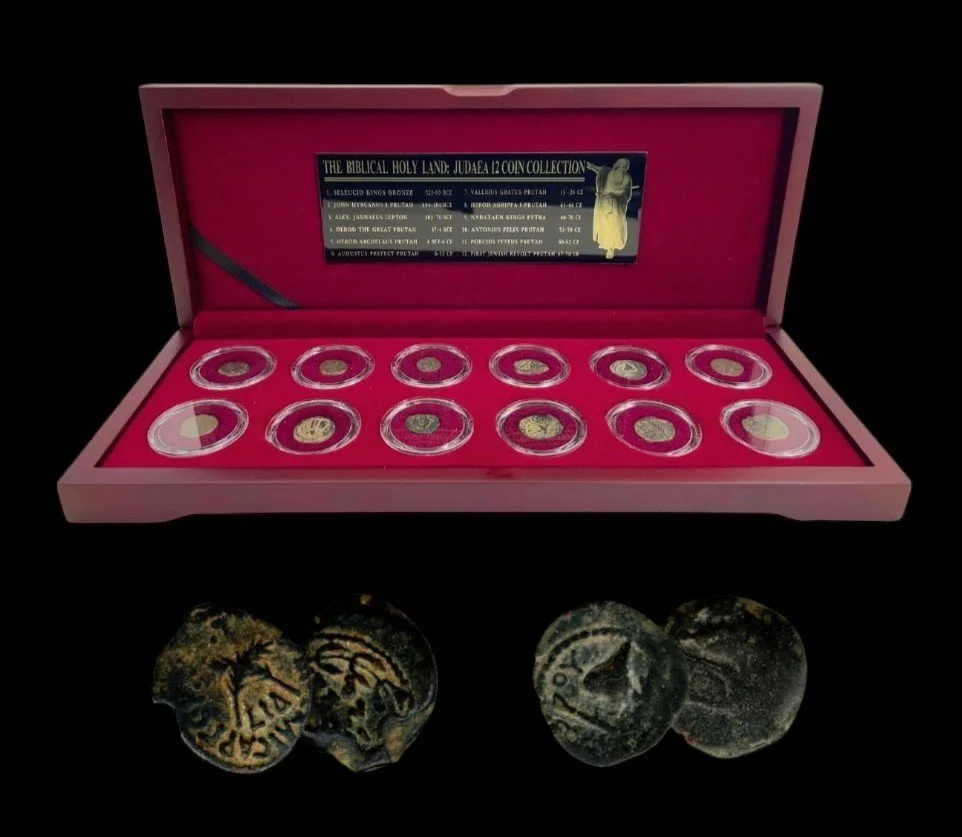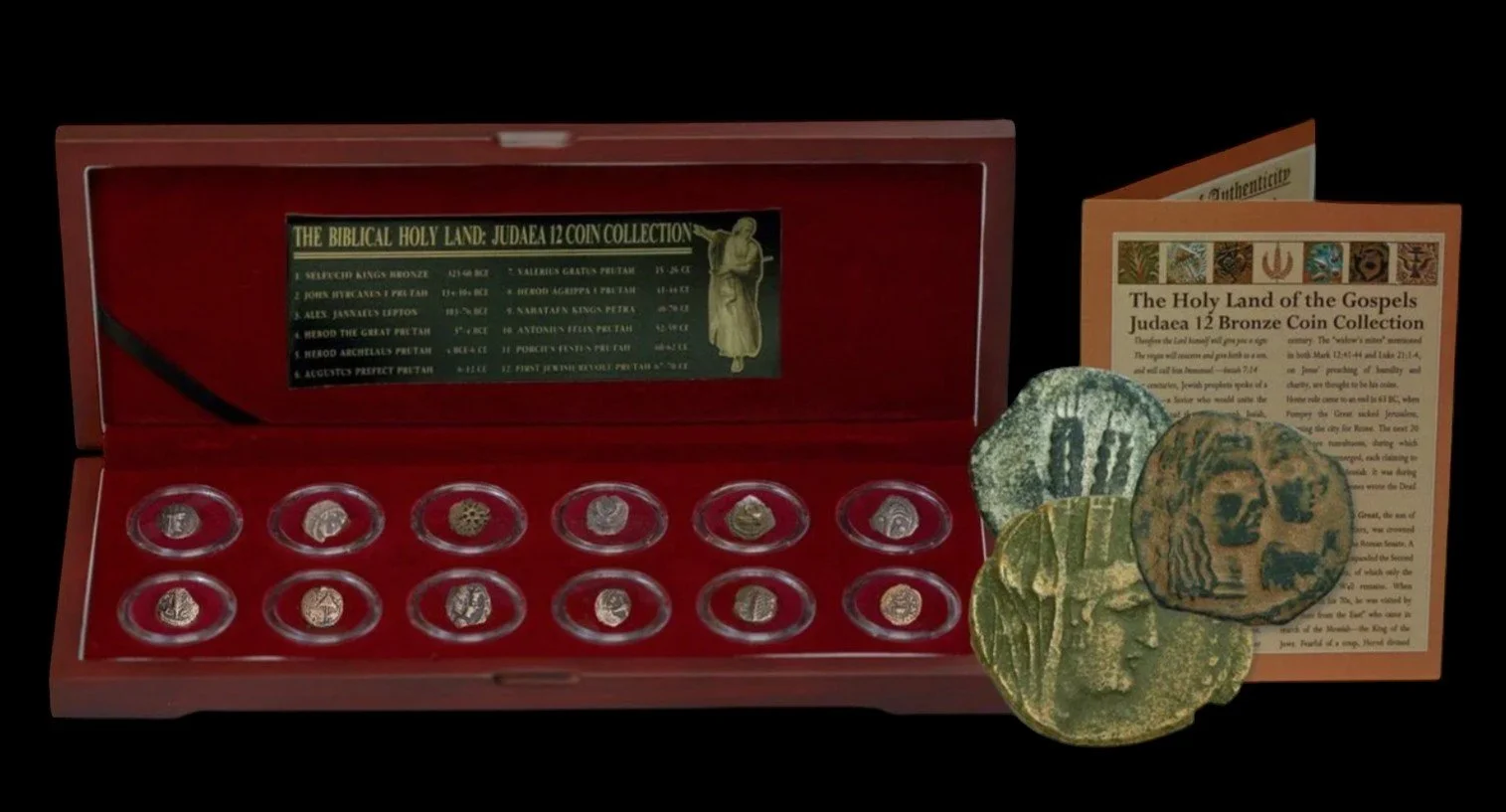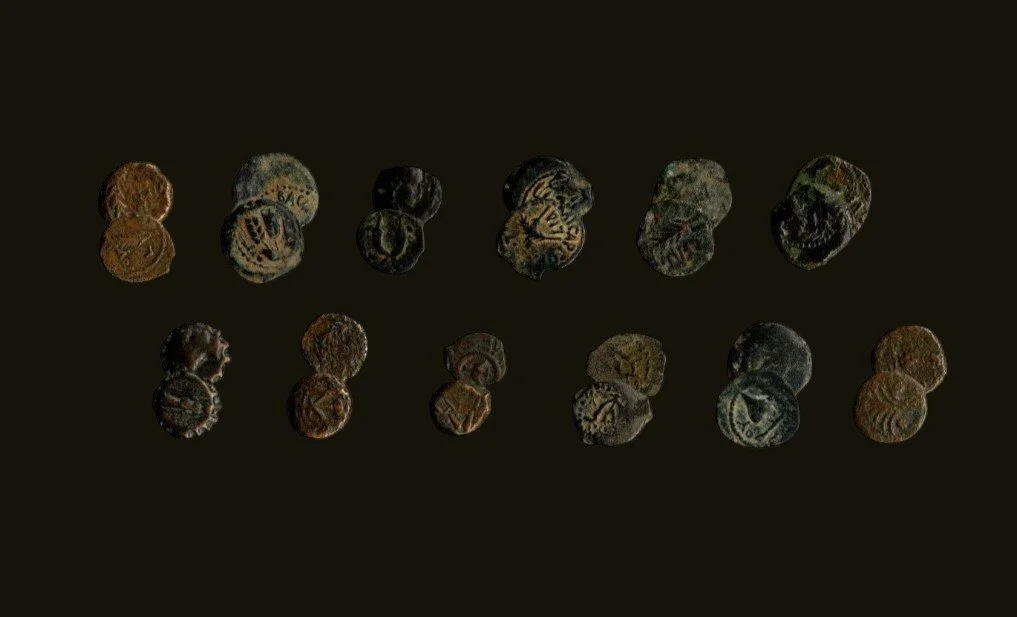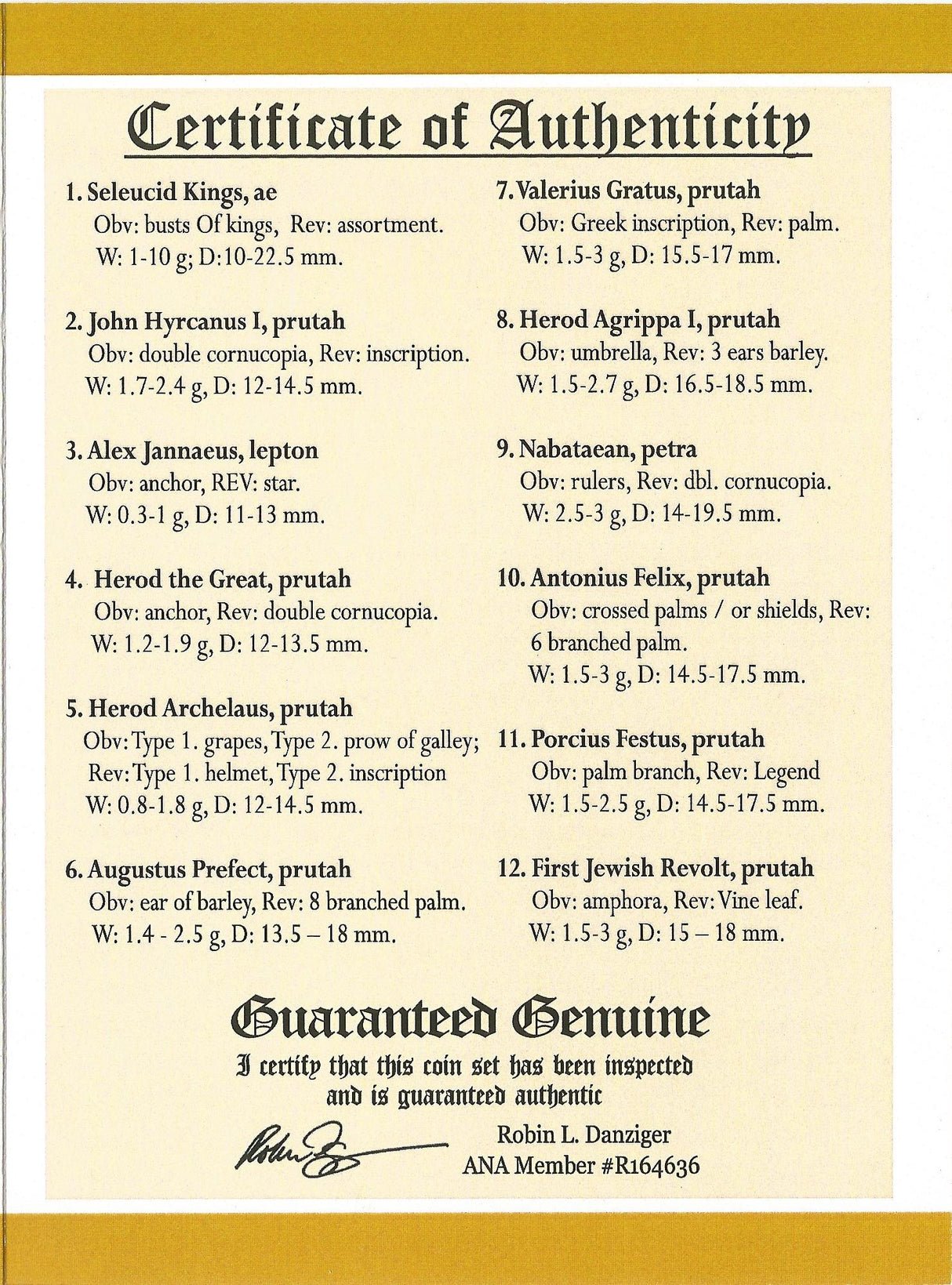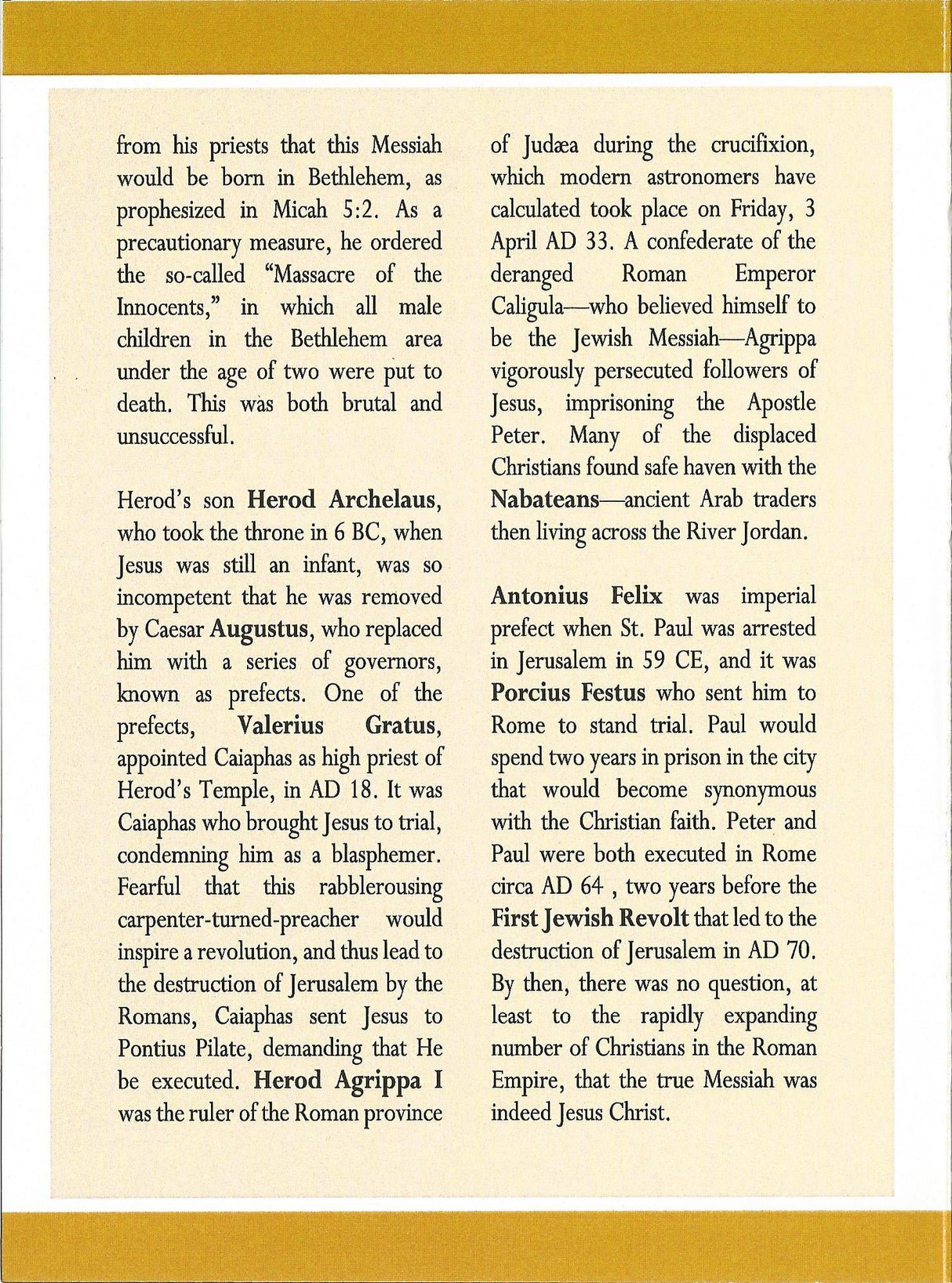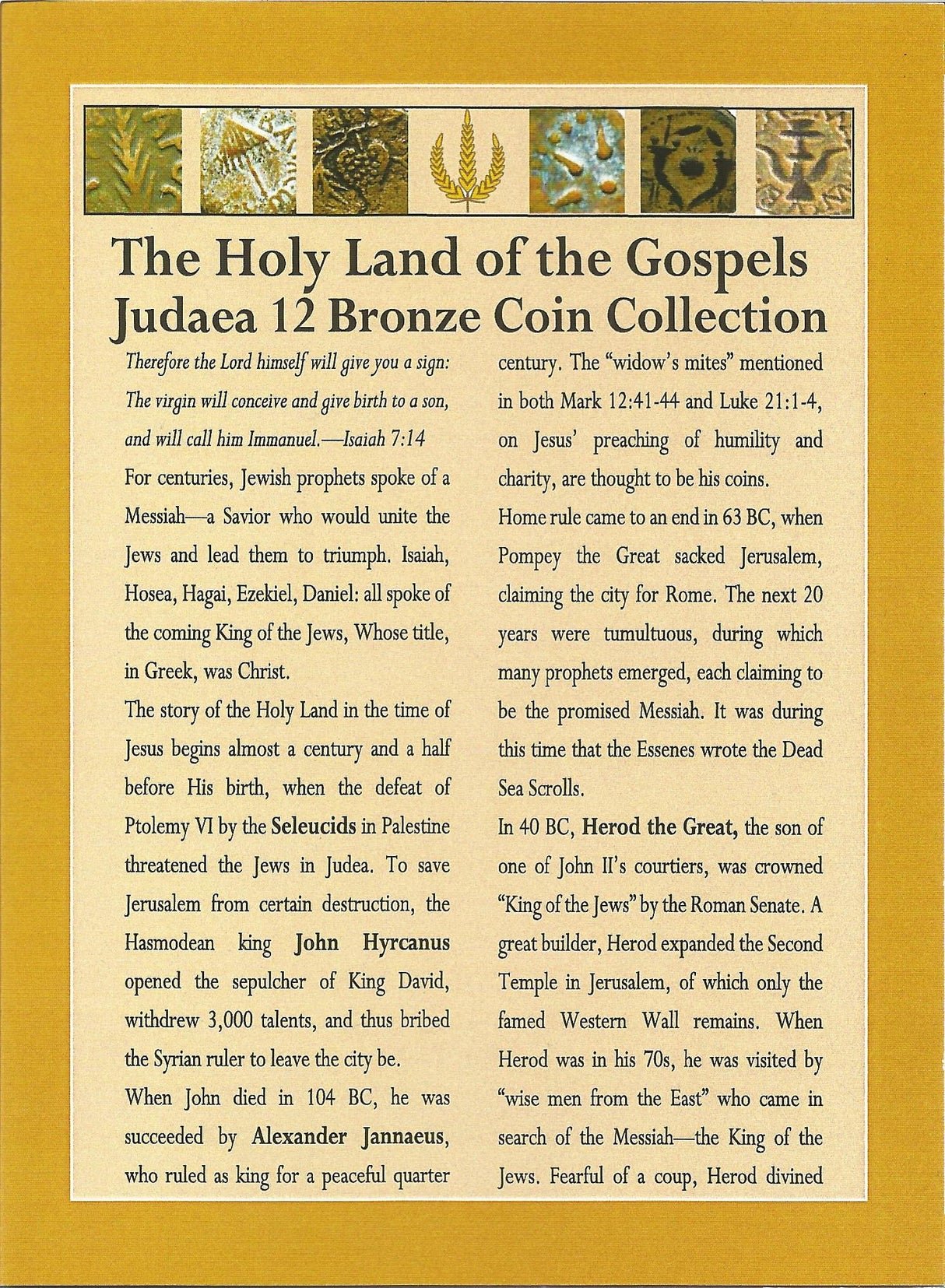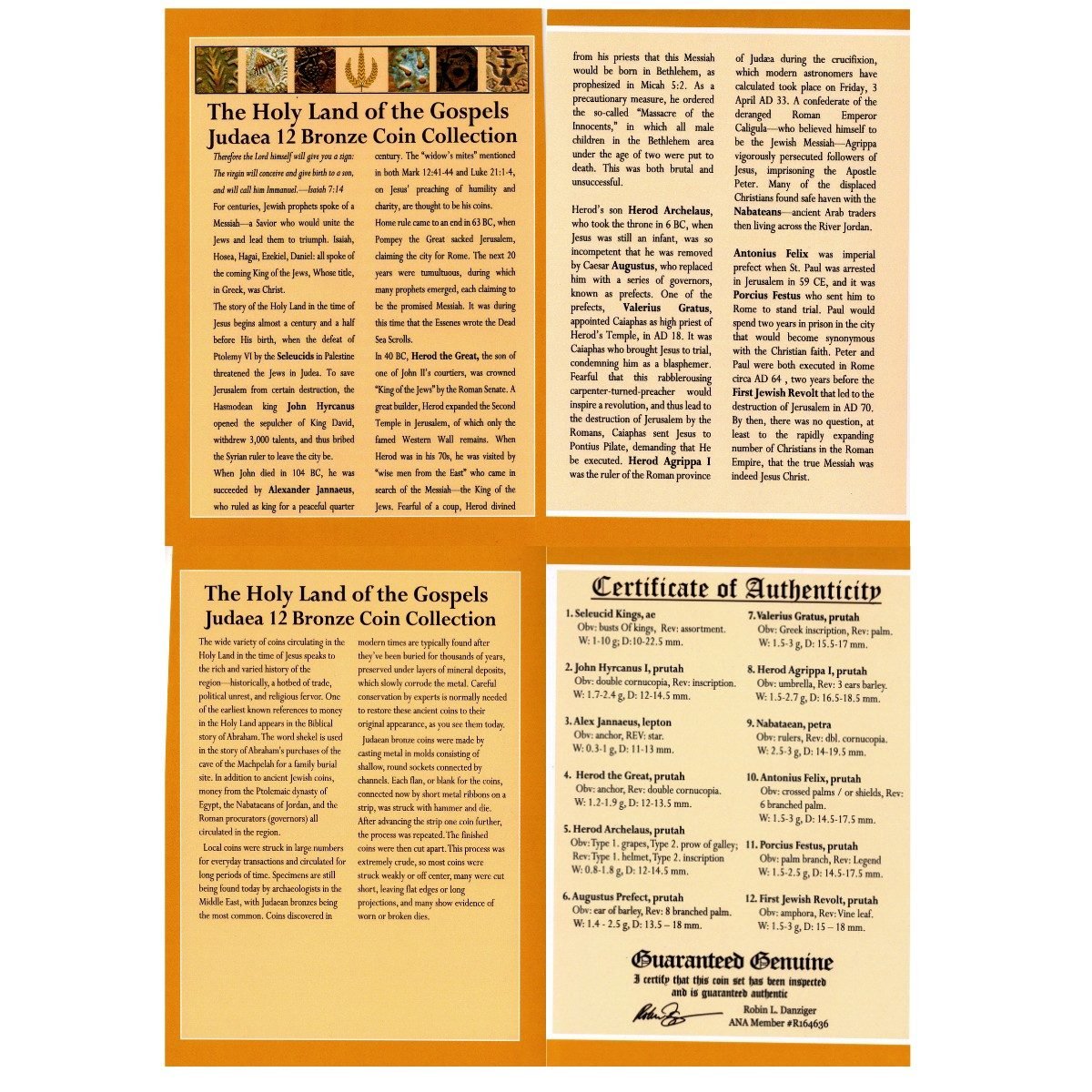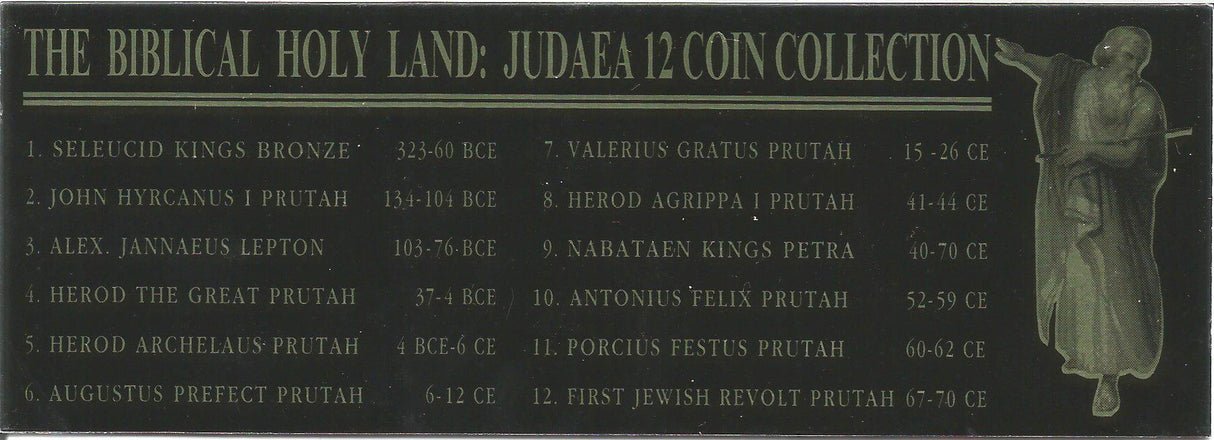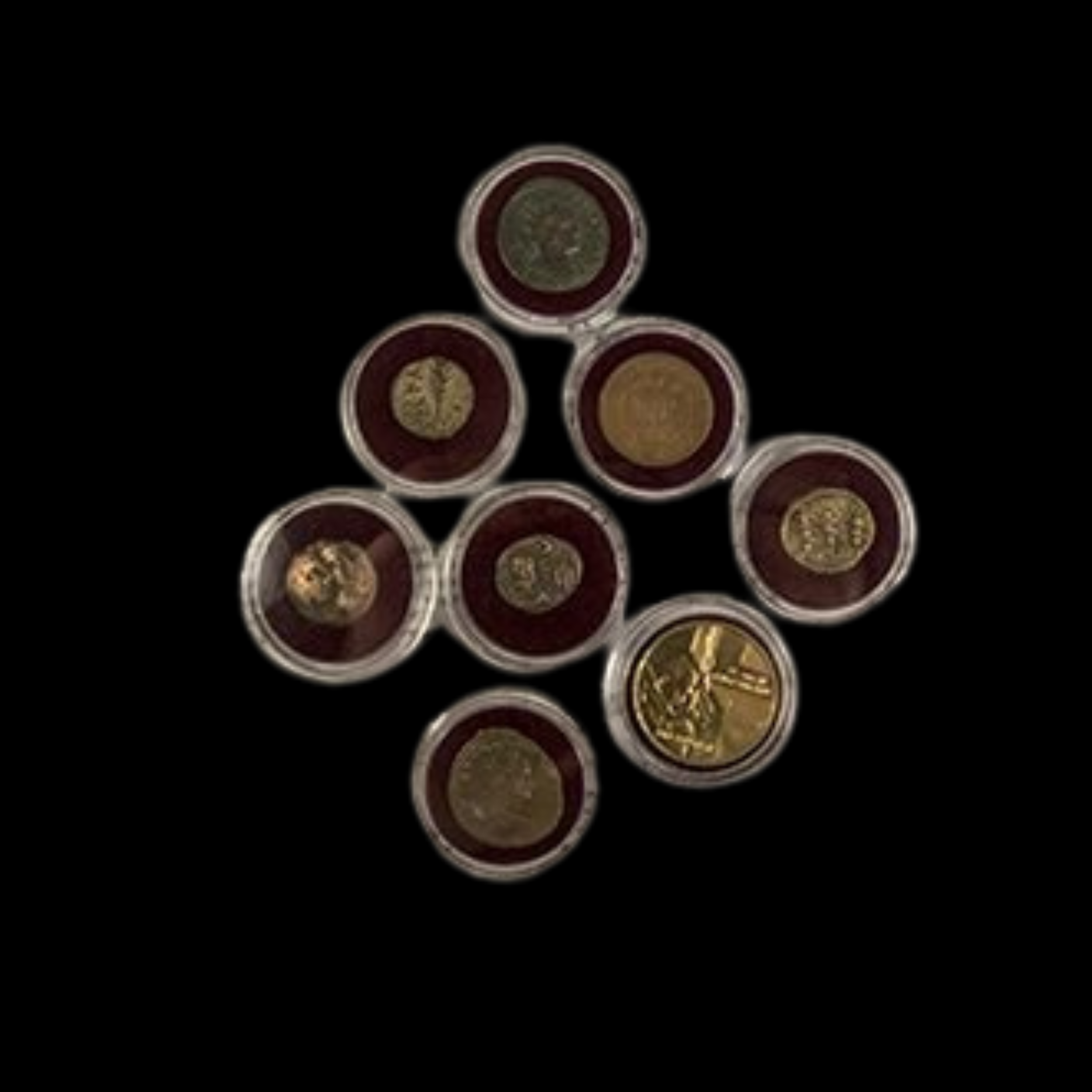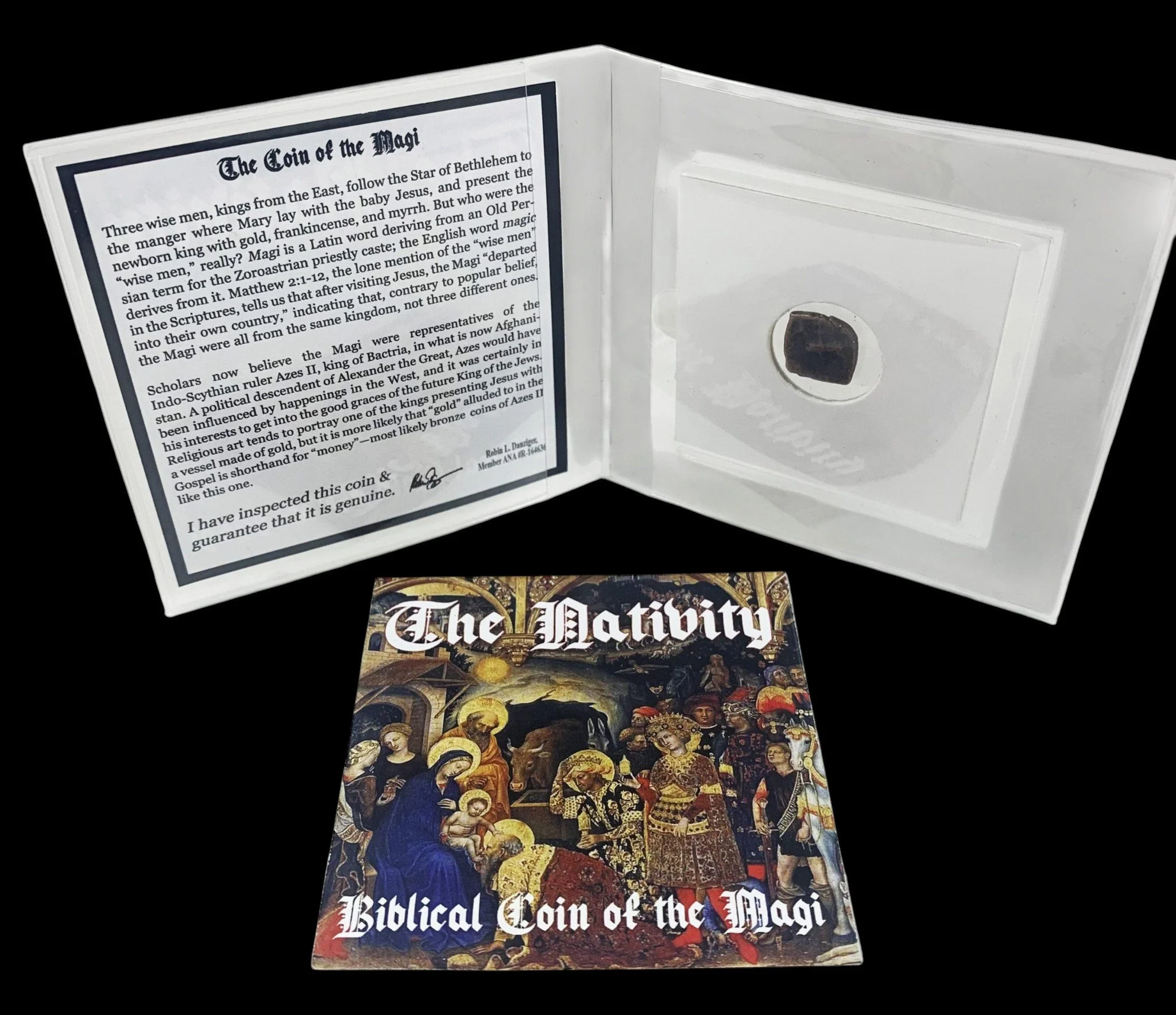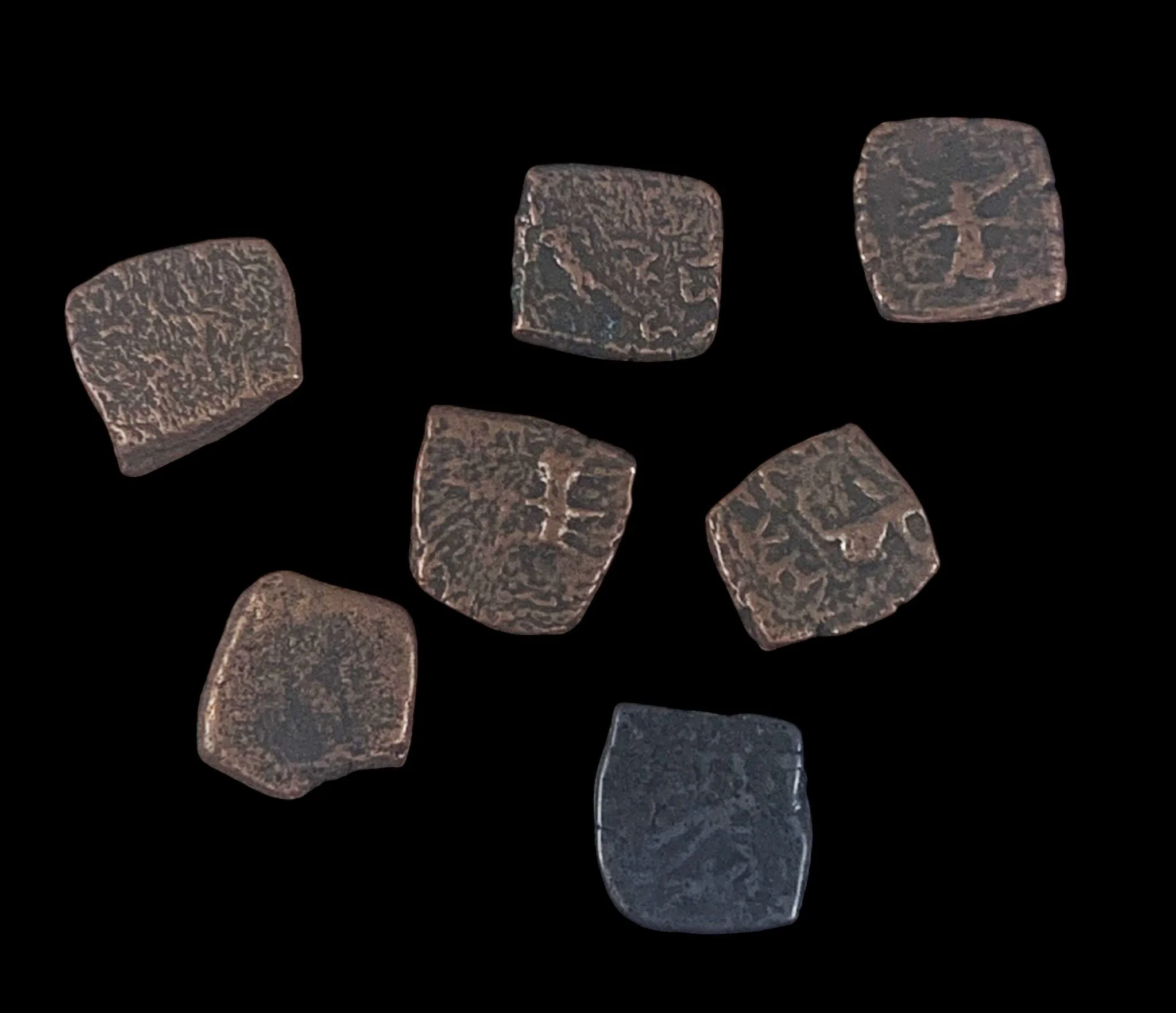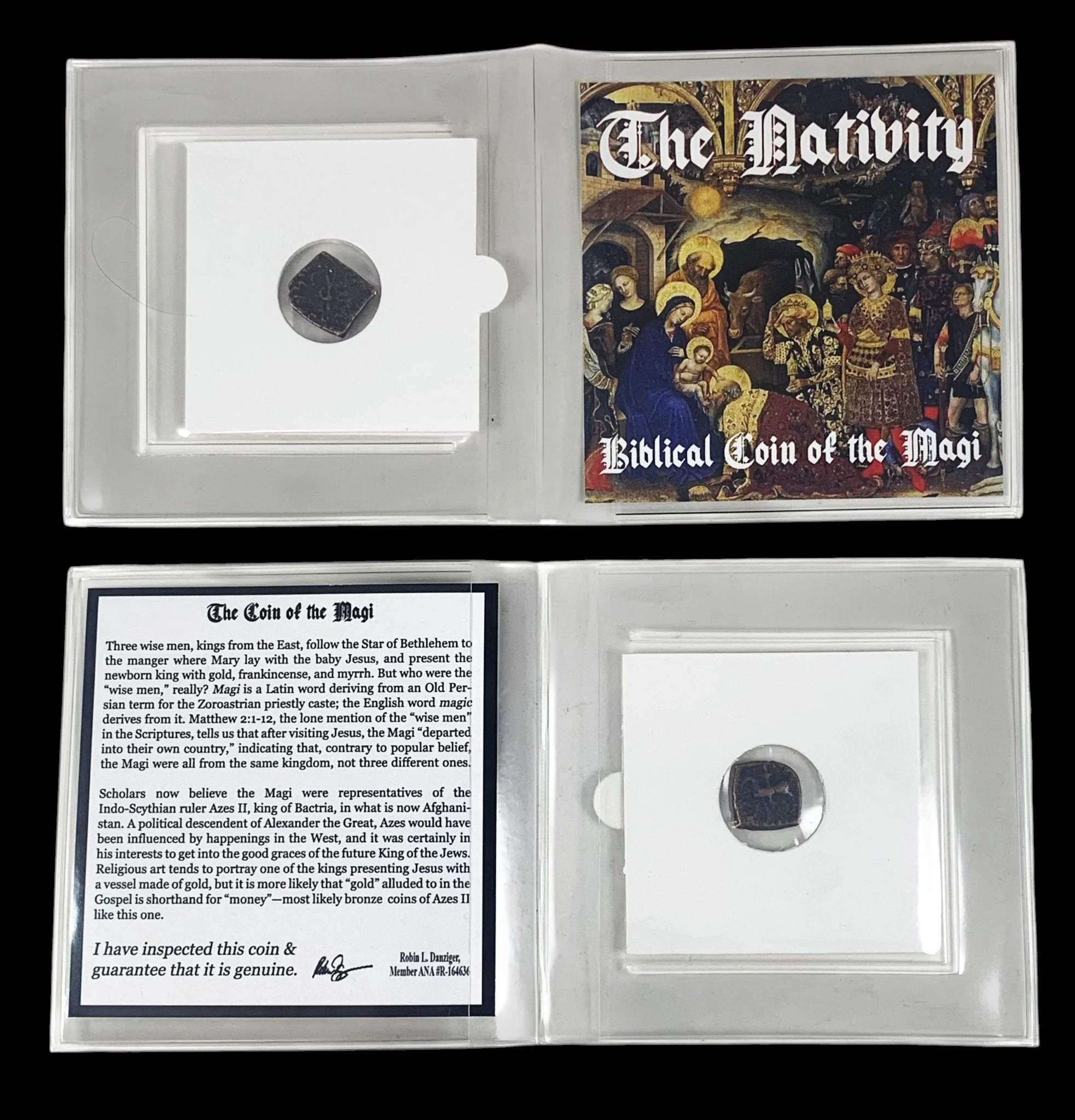 Image 1 of 5
Image 1 of 5

 Image 2 of 5
Image 2 of 5

 Image 3 of 5
Image 3 of 5

 Image 4 of 5
Image 4 of 5

 Image 5 of 5
Image 5 of 5






Judean Bronze Prutah (about 2130-2140 years ago)
This remarkable bronze coin represents a pivotal moment in Jewish history as one of the first coins minted by an independent Jewish ruler. Struck under John Hyrcanus I (also known as Yohanan Hyrcanus), this coin symbolizes the hard-won autonomy of Judea following centuries of foreign domination.
Coin Description:
Front side: Double cornucopia (twin horns of plenty) with a pomegranate or poppy head between them, symbolizing abundance and prosperity
Back side: Simple Hebrew inscription within a wreath, reading "Yehohanan the High Priest and the Council of the Jews" or abbreviated version of this text
Technical Details:
Bronze composition
Denomination: Prutah (small bronze coin used in ancient Judea)
Date: Circa 135-104 BC
Historical Significance: This coin represents a watershed moment in Jewish history as one of the first coins ever minted by a Jewish ruler. After the successful Maccabean Revolt against the Seleucid Empire, John Hyrcanus I expanded the borders of the independent Hasmonean kingdom and secured true political autonomy for Judea. As both High Priest and ethnarch (national leader), Hyrcanus I struck these coins as a powerful symbol of Jewish sovereignty. The design reflects both Jewish identity (through Hebrew inscriptions) and Greek influence (through the cornucopia motif), illustrating the complex cultural position of Judea between Eastern and Hellenistic worlds. This coin circulated during a rare period of Jewish independence that would last until the Roman conquest under Pompey in 63 BC.
This remarkable bronze coin represents a pivotal moment in Jewish history as one of the first coins minted by an independent Jewish ruler. Struck under John Hyrcanus I (also known as Yohanan Hyrcanus), this coin symbolizes the hard-won autonomy of Judea following centuries of foreign domination.
Coin Description:
Front side: Double cornucopia (twin horns of plenty) with a pomegranate or poppy head between them, symbolizing abundance and prosperity
Back side: Simple Hebrew inscription within a wreath, reading "Yehohanan the High Priest and the Council of the Jews" or abbreviated version of this text
Technical Details:
Bronze composition
Denomination: Prutah (small bronze coin used in ancient Judea)
Date: Circa 135-104 BC
Historical Significance: This coin represents a watershed moment in Jewish history as one of the first coins ever minted by a Jewish ruler. After the successful Maccabean Revolt against the Seleucid Empire, John Hyrcanus I expanded the borders of the independent Hasmonean kingdom and secured true political autonomy for Judea. As both High Priest and ethnarch (national leader), Hyrcanus I struck these coins as a powerful symbol of Jewish sovereignty. The design reflects both Jewish identity (through Hebrew inscriptions) and Greek influence (through the cornucopia motif), illustrating the complex cultural position of Judea between Eastern and Hellenistic worlds. This coin circulated during a rare period of Jewish independence that would last until the Roman conquest under Pompey in 63 BC.







